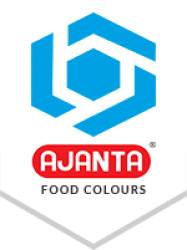_1743761757.jpg)
Synthetic food colours play a crucial role in enhancing the visual appeal of a range of products including food, beverages, cosmetics, pharmaceuticals, and pet food. However, manufacturers who are using synthetic food colours in their products unknowingly make some mistakes that affect the sales of their products due to the use of colour dosage, quality issues, regulatory challenges, storage, and handling. In this article we are going to explore most common mistakes made by manufacturers during using synthetic food colours in their products and also discusses about how to fix them.
Not Following Regulatory Guidelines
Each country has strict regulations on the use of synthetic food colours in products. Bodies such as the FDA (Food and Drugs Administration) in the United States, EFSA (The European Food Safety Authority) in the European Union, and FSSAI (Food Safety and Standards Authority of India) in India regulate the use of colours in products.
Common Mistakes
- Using non-approved colours in certain regions.
- Exceeding the allowed concentration limits.
- Failing to declare synthetic food colours correctly on packaging.
How to Fix It -
Manufacturers always have to check local regulations on colour before using them in products. Partner with a reliable synthetic food colour supplier that provides compliance documentation and ensures regulatory approval.
Incorrect Colour Dosage
Using too much or too little colour can impact the visual appeal of final product and quality. Overuse colour makes the products unnatural and underuse of colour makes them dull or ugly.
Common Mistakes
- Adding excessive colour to compensate for poor ingredient quality.
- Not standardizing colour dosage across batches.
- Using inaccurate measurement techniques.
How to Fix It -
Implement precise colour measurement systems and conduct batch testings to maintain uniformity of colours in products. Use the colour like lake colours or water-soluble dyes according to the application can also improve consistency.
Choosing the Wrong Type of Synthetic Colour
There are many different types of synthetic food colours in each perform differently based on the product type. Using the wrong colour in product can lead to various issues such as stability, fading, or unwanted interactions with ingredients.
Common Mistakes
- Using water-soluble food dyes in oil-based products.
- Choosing lake colours when a water-soluble dye is required.
- Selecting unstable colours that fade when exposed to heat or light.
How to Fix It -
Manufacturers have to understand the solubility, stability, and pH compatibility of colours before use them in products. For incense lake colours perform best in fat based products like chocolates and coatings. Water soluble dyes are ideal for beverages, syrups, and confections, while blended synthetic food colours are mostly used to achieve specific shades while maintaining stability.
Neglecting Storage and Handling Guidelines
Improper storage of synthetic food colours can leads to degrade them that affects their performance and shelf life. Its exposure to heat, moisture, or light can lead to fading, clumping or reduce effectiveness.
Common Mistakes
- Storing colours in humid conditions, leading to moisture absorption.
- Keeping colourants near strong odours, which may cause contamination.
- Using expired or improperly sealed colourants.
How to Fix It -
Manufacturers should store synthetic food colours in airtight containers, in a cool, dry place away from direct sunlight. Implement FIFO (First In, First Out) inventory management to avoid using expired products.
Not Conducting Compatibility Testing
Some food ingredients can intract negatively with synthetic food colours that may cause unexpected shade changes, precipitation or loss of vibrance on products.
Common Mistakes
- Not testing colour stability in different pH levels.
- Ignoring interactions with emulsifiers, preservatives, or other additives.
- Assuming all food colours perform the same across applications.
How to Fix It -
Manufacturers should always perform small batch testings before full scale production. Check colour stability under various conditions including pH shifts, heat processing and storage durations may results to best colour performance on products.
Overlooking Consumer Preferences and Market Trends
Consumers demand is shiting towards vibtant but naturally appealing food colours. By using those type of colour in products manufacturers can increase sale and acceptability of their products in the market.
Common Mistakes
- Using colours that don’t match market expectations.
- Ignoring regional preferences for food aesthetics.
- Choosing outdated shades that may not appeal to consumers.
How to Fix It -
Manufacturers have to update with food colour trends and market research. Work with a trusted food colour manufacturer to develop shades that align with consumer expectations.
Conclusion
Ignoring the aforementioned pitfalls may lead to misplaced marketing and lost sales opportunities. If followed, the right colour type, storage, guideline compliance, and extensive testing will give the manufacturer an edge he sorely needs.
Ajanta Food Colours has partnered with multiple manufacturers and small business startups to offer them unmatched quality of synthetic food colours, designed according to rigid regulatory and performance criteria.




